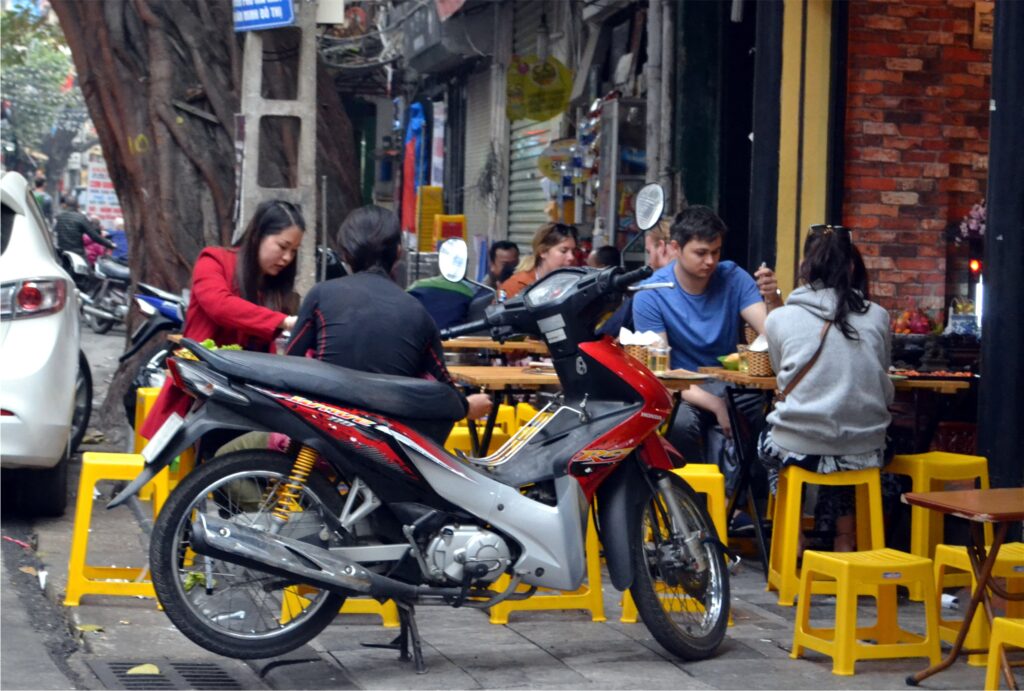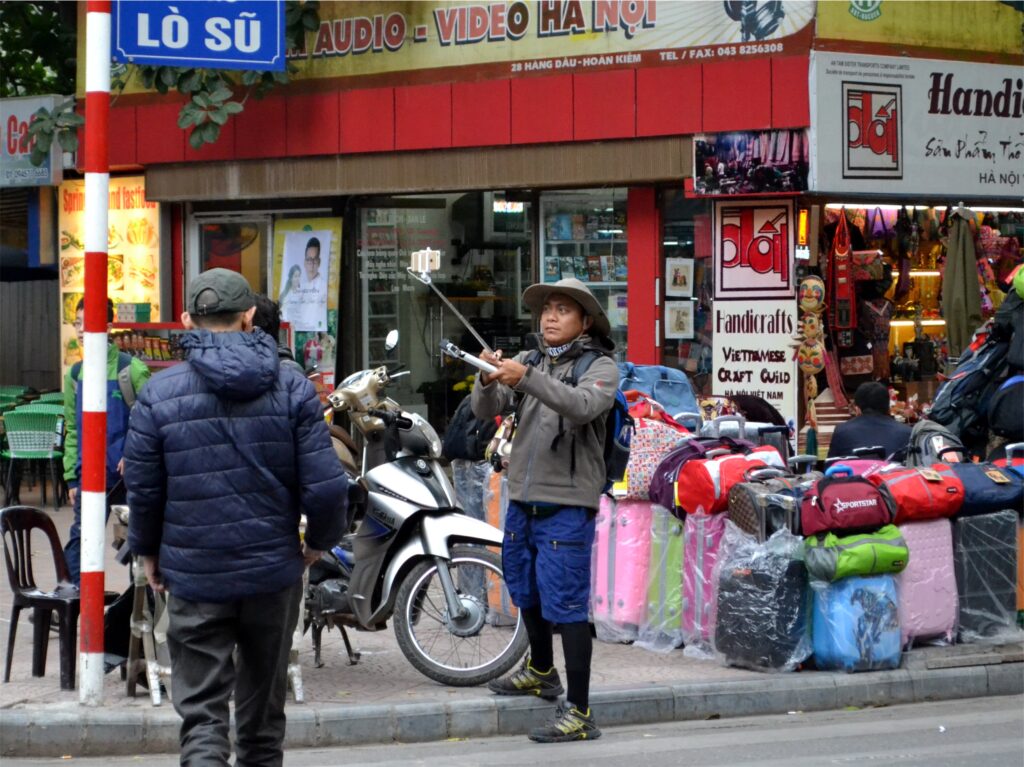Text and Photos by Henrylito D. Tacio
I thought I was still in Davao City. But I was not dreaming. I traveled by plane from Davao City to Manila for one hour and 20 minutes. From Manila, the flying hours were three hours and 15 minutes.
I arrived when it seemed everyone was still sleeping — except those who were at the airport and the staff at the hotel where I was billeted. Although it was already 3 in the morning when I hit the bed, I still managed to wake up early and explore the outside surrounding of the hotel, which was built in 1901 yet.
I walked around, and the streets were so cleaned. It was so cleaned that I wasn’t able to see any cigarette butts. I was thinking of Davao City, where cigarette smoking in public is strictly prohibited. I walked further, and I told myself: I am not in Davao City anymore. The motorbikes seemed to tell me: you are now in Hanoi. Yes, Hanoi, the capital city of Vietnam.
Actually, I wasn’t alone. In fact, I was not the only one from Davao. Together with me was Ruben Gonzaga, the winner of the Pinoy Big Brother Celebrity Edition. It is his second trip abroad. The first time was in Beijing, China, where we were together also.
Actually, this trip — and that of Beijing — was part of the prize we won in agricultural journalism awards.
I had been to several other Asian countries, but it was my first time to be in Vietnam. I had no intention of coming to Hanoi due to what I have read in newspapers and those I had seen in motion pictures. But I was completely wrong.

Eating along the pathway 
Clean street
I have read that Hanoi today is one of the top tourist destinations. It has been said that its phenomenal increase in tourist traffic in recent years is largely due to the safety factor. It means that just like Davao City, Hanoi is one of the safest places in the world to travel.
And Ruben and I can attest to that. On our third day in the city, Ruben tried to roam around. He wanted me to go with him, but I was so tired since we went to Ha Long Bay (yes, you read it right, the place which was included in the World Heritage List by the United Nations Educational, Scientific and Cultural Organization or UNESCO).
“I walk alone going to Hoan Kiem Lake,” Ruben told me later. “In fact, I took some photos.”
He showed me his photos, and I envied of what he had taken. I should have accompanied him so I could have taken what he had shot with his camera.
Like Davao City, Hanoi is a very safe place — especially for foreigners and tourists. But still, you have to be aware of what’s going on and to keep your presence in mind. “The Vietnamese are by and large honest, friendly and helpful, and friendships forged here often lead to repeat visits,” wrote one blogger. “Nevertheless, every city, Hanoi included, has its share of tricksters who are not averse to taking advantage of new arrivals. But by following principles of common sense, as well as keeping a look-out for the following types of villain, you should survive unscathed.”
Generally, when I am in another country, I don’t go out usually — except when I am with a group. But going out alone in another country, it’s a big no (although I did once — when I was in New York!). In Hanoi, I was able to walk alone — without fear of being snatched, mugged, or worse, stabbed.
It occurred to me that Hanoi is indeed very, very safe. I was able to go from one place to another without feeling stressed out. It feels like I was in Davao City!
The only thing I never felt at ease with was when I was shopping. I am not used to buying things in thousands. Imagine buying a T-shirt at 100,000 dongs. I became an instant millionaire when I exchanged my US$100 for a whopping 2 million dong. And by the way, our peso currency is accepted there.

Cyclo taxi 
Taking footage
Walking around Hanoi is one thing, but crossing across the street is another story. Hung Nguyen, our tour guide, said Hanoi is home to about 7 million people. And there are 3 million motorbikes. It means that every other person has a motorbike!
“Crossing the road can be a heart-stopping activity in Hanoi, as pedestrians come lowest in the pecking order of road usage,” the blogger I quoted earlier wrote. “Wait for a reasonable let-up in the traffic, then cross at a steady pace and allow the cars and motorbikes to flow around you.”
One good thing about the tour was that it was still wintertime. That’s one big difference between Davao and Hanoi. We were at a time when temperatures average 17-22⁰C. I am not so good when it comes to description, so allow me to use the words of Alfred “Krip” A. Yuson, who accompanied us.
In his column, “Kriptotkin,” which appeared in Philippine Star, he wrote: “That means thick-wear weather — while marveling at parks, lakes, lagoons and temple grounds redolent with flowering pink peach blossoms and golden kumquat highlighting potted trees with symbolic good fortune.”
Wherever you go, flowers abound. Yuson said it well: “Streetsides in Hanoi are spring-pretty with rows of pansies, asters, geraniums, marigolds and cosmos, with dark-red poinsettias are still in full bloom.”
Davao and Hanoi may be several kilometers apart — there is a time difference of one hour between the Philippines and Vietnam — but they may be the same in one way or another. The No-Smoking policy, clean streets, and warm people — these are just some of the common denominators.
If Hanoi has millions of motorbikes, Davao has thousands of jeepneys plying the busy streets. Hanoi has taxis, but it also has cyclo taxis. Davao, on the other hand, has taxis, and it has the kaba-kaba.
As we left Hanoi, the words of “Memory about Hanoi” sung by Hồng Nhung kept ringing our ears. “Wherever we go, Hanoi always stays in our heart. Our dear Hanoi, the beloved capital, that has undergone war and peace. Memory of the ancient streets shaded by trees, lulling sounds of the cicadas in summer noons. Memory of the newly built parks, your footsteps on the path were still there clinging…”

